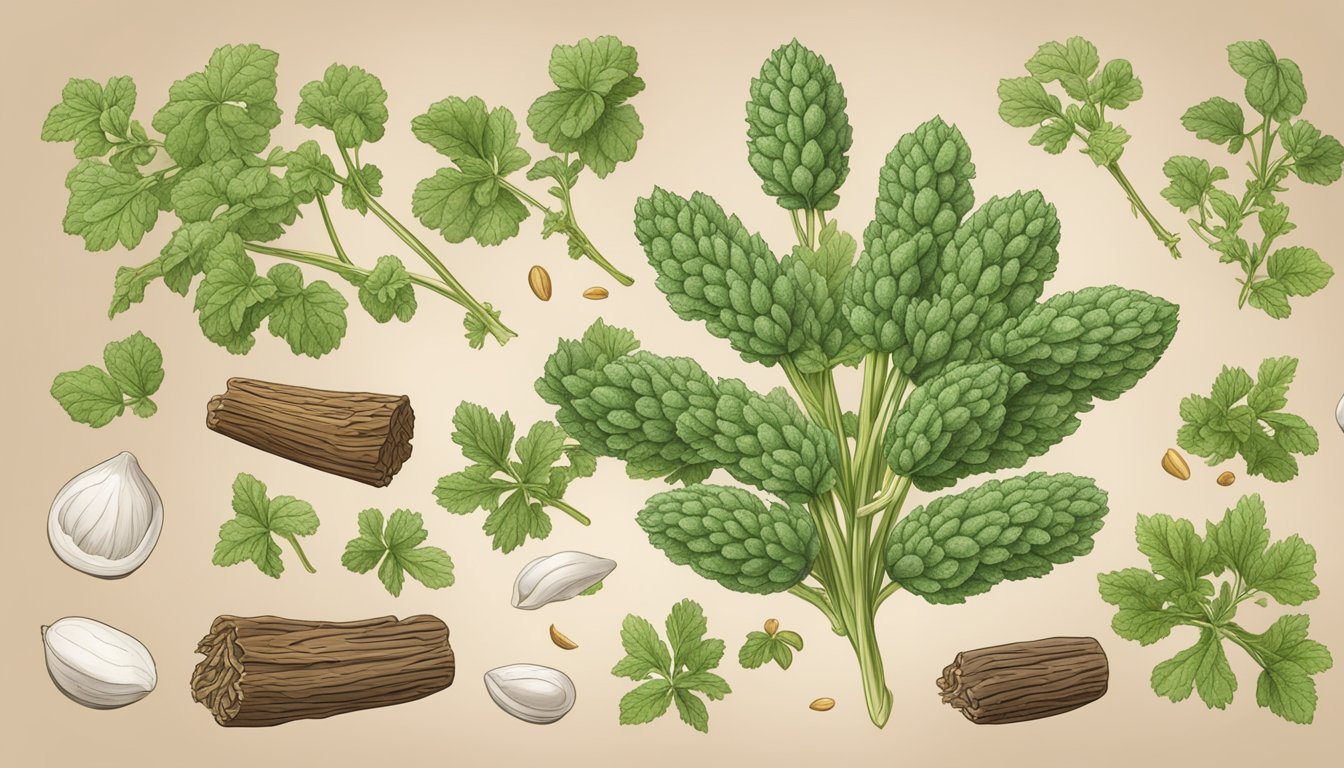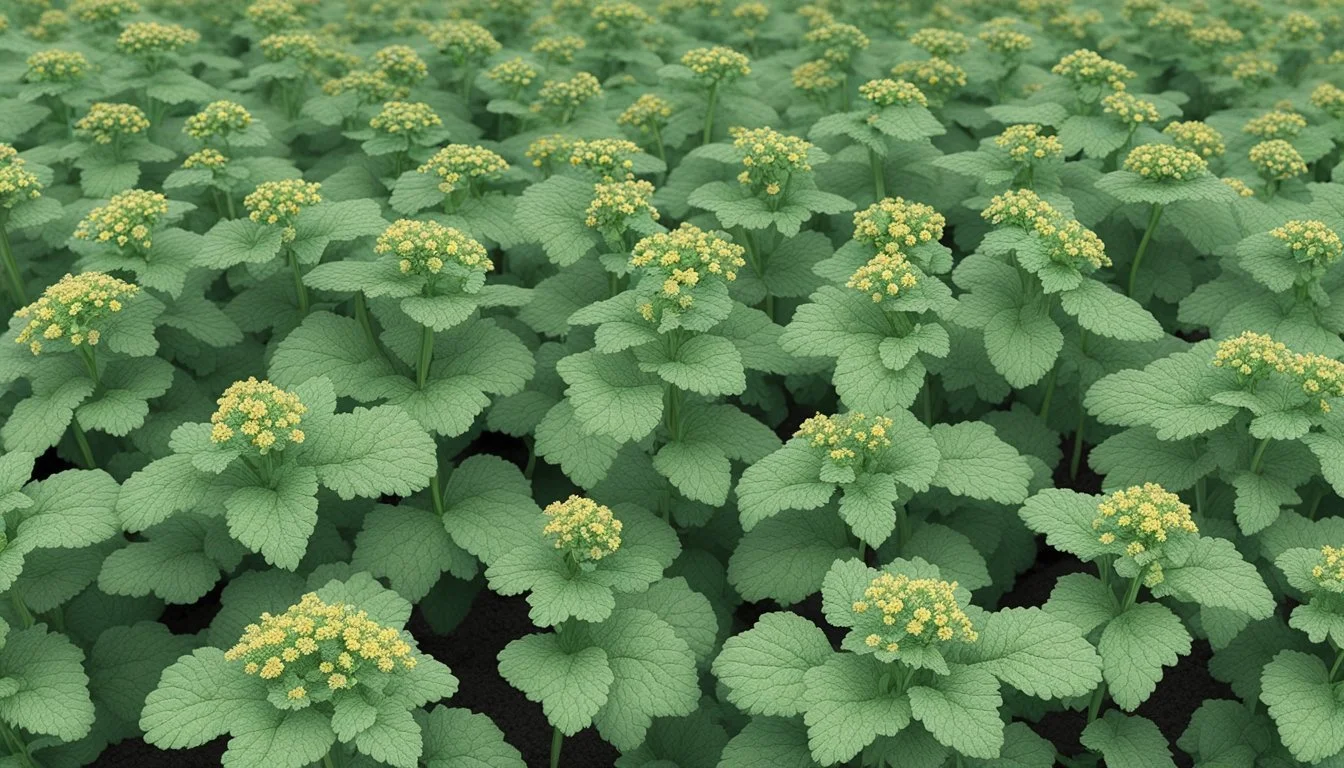Horehound Seeds Substitutes
Top Alternatives for Your Garden
Finding suitable substitutes for horehound seeds is essential for anyone interested in growing this medicinal herb but faces difficulties sourcing the seeds. Horehound, or Marrubium vulgare, is known for its health benefits, making it a valuable addition to both home gardens and herbal medicine cabinets. For gardeners who cannot access horehound seeds, other members of the mint family can serve as effective alternatives.
One viable substitute for horehound seeds is lemon balm (Melissa officinalis). This herb shares similar growth habits and can thrive in the same conditions as horehound. Its medicinal properties, including soothing digestive issues and reducing stress, make it a worthwhile replacement.
Catnip (Nepeta cataria) is another alternative that fits into this category. Though commonly associated with felines, catnip offers medicinal benefits such as relieving headaches and promoting relaxation. It grows well in various climates and can easily replace horehound in herbal gardens.
The Basics of Horehound
Horehound is a perennial herb with deep historical roots and multifaceted uses. Its successful cultivation requires specific growing conditions, making it a unique addition to any herb garden.
What Is Horehound?
Horehound (Marrubium vulgare), a member of the mint family (Lamiaceae), is a hardy perennial herb. Native to Europe, it has spread globally due to its medicinal properties and ease of growth. This herb features woolly, gray-green leaves and small, white flowers.
Horehound is primarily known for its bitter taste and is often used in cough remedies and candies. The plant's medicinal uses date back to ancient times, where it was utilized for respiratory and digestive ailments.
Growing Conditions
For optimal growth, horehound thrives in full sun and prefers well-draining soil. It can tolerate a wide range of soil types, though a neutral to mildly alkaline pH is ideal. When planting, ensure the location receives ample sunlight throughout the day.
Watering should be moderate; allow the topsoil to dry out between watering sessions to prevent root rot. Horehound is drought-tolerant once established and does not require frequent watering.
Fertilization is generally unnecessary, as horehound can thrive in poor soils. Over-fertilizing can lead to weak, leggy growth. For colder regions, some winter protection may be needed, though the plant is hardy to USDA Zone 4.
Propagation and Cultivation
Horehound requires specific soil conditions and careful maintenance for optimal growth. Gardeners can start the herb from seeds or cuttings and must be mindful of pests and invasive tendencies.
Starting Horehound From Seed
Horehound seeds can be started indoors or directly sown in the garden. For best results, begin indoors about 6-8 weeks before the last frost in spring. Prepare seed trays with well-draining soil, lightly press the seeds into the soil, and cover them with a thin layer. Maintain a temperature of around 70°F to ensure good germination rates. Germination can take 10-14 days. Once seedlings reach 2-3 inches tall, they can be prepared for transplanting.
Transplanting and Maintenance
Transplant horehound seedlings outdoors after the last frost when temperatures are consistently warm. Choose a sunny location with dry, sandy or loamy soil. Space plants 12-18 inches apart to allow for adequate airflow and growth. Watering should be moderate; avoid overwatering to prevent root rot. Apply mulch to retain soil moisture and suppress weeds. Horehound doesn’t require much fertilizer but compost can be added to improve soil fertility. Regularly prune the plant to encourage new growth and prevent it from becoming too woody.
Common Pests and Challenges
Horehound is relatively pest-resistant, though it may sometimes attract spider mites and aphids. Regular inspection and removing infected parts can help manage these pests. Powdery mildew can occur in humid conditions; ensure plants have good airflow and avoid overhead watering. Horehound can become an invasive species in some areas if not managed properly. Regular cutting back and preventing seed dispersal are crucial strategies for controlling its spread. Additionally, deer generally avoid this plant, making it a relatively low-maintenance choice for many gardeners.
Harvesting and Utilization
Marrubium vulgare, commonly known as horehound, offers various practical applications which include its medicinal benefits and culinary uses. Understanding effective harvesting techniques is essential for maximizing its utility.
Harvesting Techniques
Horehound is usually harvested when it reaches maturity. This typically occurs after one growing season. The leaves and flowering tops are the primary parts collected. Use sterilized pruners to cut the plant at the stem. Harvesting should be done in the morning when the oils are most potent. Once harvested, the foliage should be dried in a well-ventilated, dark area. Proper drying preserves the medicinal properties and ensures longevity.
Medicinal Uses and Benefits
Horehound has been long treasured as a medicinal plant. Rich in marrubiin, it serves as an effective expectorant, useful for treating bronchitis and soothing the lungs. It's commonly included in cough drops and tinctures. Additionally, horehound tea is reputed to support digestive health, regulate blood pressure, and manage blood sugar levels. The leaves can also be infused into oils for additional therapeutic benefits.
Culinary Applications
In the kitchen, horehound can be a fascinating addition to various recipes. Dried leaves are often used to make horehound tea, which can include honey, sugar, lemon, or even a splash of rum for flavor. Horehound candy is another traditional sweet, where the ground leaves are boiled with sugar and water. These applications provide a unique blend of bitterness and sweetness that is both distinctive and versatile.
Conservation Concerns
Conserving native plant species is crucial in preserving biodiversity and maintaining ecosystem balance. Managing invasive horehound and promoting plant diversity are essential strategies for achieving this.
Managing Invasive Horehound
Horehound (Marrubium vulgare) is an invasive plant in many regions, primarily originating from Europe and Asia. It can inflict significant harm on native ecosystems by monopolizing resources and displacing indigenous species.
In gardens, regular maintenance is key to controlling horehound spread. Remove seedlings promptly and dispose of them away from the compost to prevent re-seeding. Utilizing black plastic mulch can stifle new growth. Chemical control methods may include herbicides specific to invasive plant species; however, they should be used cautiously to avoid harming beneficial insects or non-target plants.
Horehound disperses mainly through seeds, which can be transported by wind, water, or animals. Propagation through stem cuttings is another challenge, as cut pieces can regenerate. Keeping an eye on disturbed areas and monitoring for new plants is essential in managing this invasive herb effectively.
Promoting Plant Diversity
Promoting plant diversity mitigates the impact of invasive species like horehound. Diverse gardens and wildlands are more resilient and provide habitats for various beneficial insects and wildlife. Introducing a range of native plants fosters a balanced ecosystem.
Select native species adapted to local conditions to outcompete invasive plants. Use a mix of grasses, shrubs, and flowering plants to enhance ecological stability. Companion planting can also deter pests and promote mutual growth among plants.
Implementing proper care and maintenance is critical. Encouraging native flora helps ensure healthier, more diverse ecosystems that can withstand invasive species incursions. This approach not only protects against horehound but also revitalizes green spaces, supporting robust environmental health.
Aftercare and Preservation
Once horehound has been harvested, maintaining its quality involves specific aftercare practices, focusing on drying, well-ventilated storage, and proper handling to preserve its usefulness for candies and other applications.
Post-Harvest Care
After harvesting horehound, it is important to dry the plant properly. Drying should occur in a warm, well-ventilated area to prevent mold. Horehound flowers and leaves should be spread out in a single layer, ensuring air can circulate effectively around each plant part. This process usually takes a few days to a week.
Once dried, store the horehound in airtight containers. Glass jars or other food-safe containers are recommended to keep moisture out and preserve the herb's properties. Store in a cool, dark place to maintain potency and flavor, which is vital for making traditional horehound candies.
Regular checks should be made to ensure that the stored horehound remains dry and free from pests. Proper preservation techniques ensure that the harvested plant retains its benefits for extended use.







